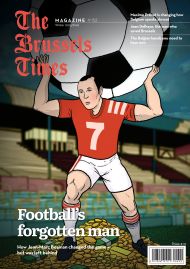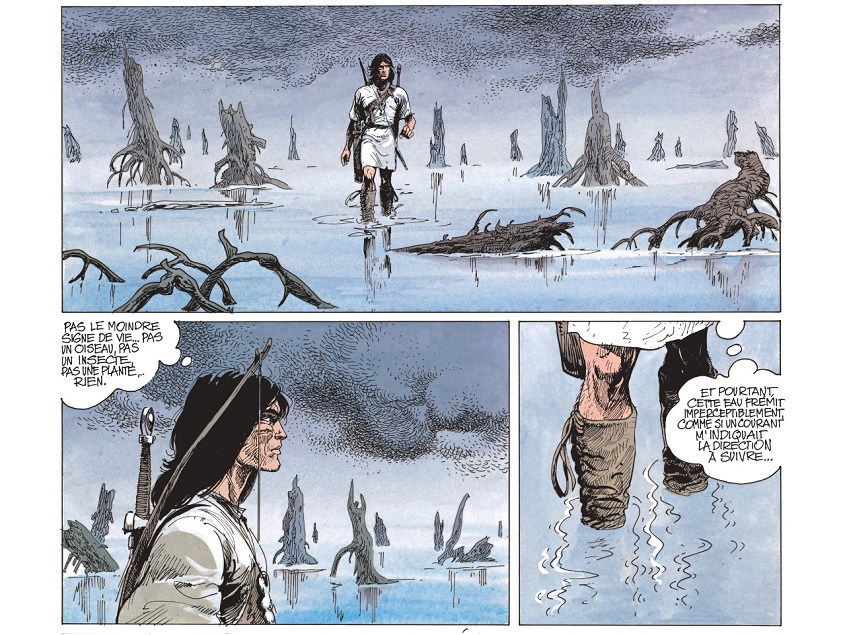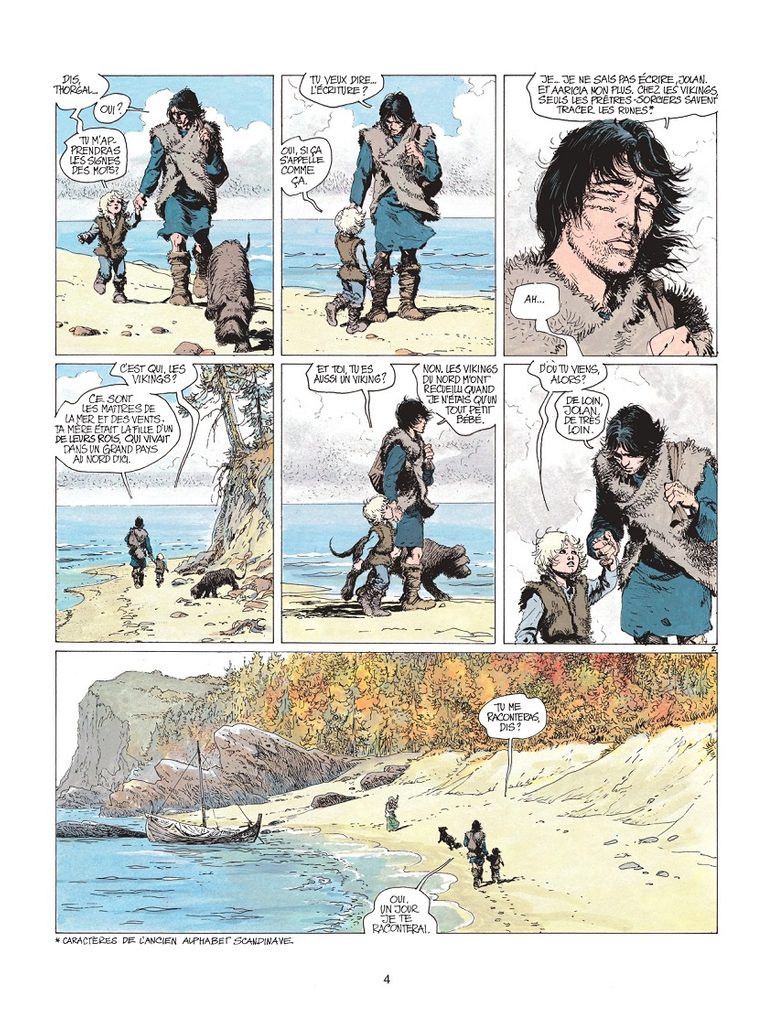Open a comic album scripted by Jean Van Hamme and you are immediately in the thick of the action.
If it’s the first page of the first Thorgal you are transported to medieval Scandinavia, chained to a crag in the wild windswept sea as the tide rises and the evil king watches and laughs at your immediate demise and mocks his daughter because she is your true love.
If it’s Largo Winch you are enjoying the luxury of your penthouse on the 90th floor when a killer bursts in with an enormous silencer affixed to his gun. Your life of cutthroat business deals, crooked IPOs, base schemes and chicanery, misappropriation of funds and high-level corruption flashes before your eyes.
And if it’s XIII, you wake up on a beach, a bullet wound to the temple, the number XIII tattooed above your left collarbone, and suffering from total amnesia. You can’t remember your name or anything about your life. You very quickly learn that a hired killer named the Mongoose is hot on your trail as is the US Secret Service which believes that you assassinated the American president.
Van Hamme is most famous as a comic book scriptwriter, but he is also a novelist and screenwriter. Now 84, he is the author of over 130 comic books that have sold millions of copies and won multiple awards. Born on the eve of the Second World War, he grew up in Brussels and completed engineering, business management and journalism studies.
While his first job was working for a subsidiary of Phillips, he wrote on the side as a hobby. The corporate world might not seem like an obvious environment for scriptwriting, but Van Hamme sees it differently. "The experience of hierarchy, the experience of authority, the experience of manipulation, that's the experience of being a piece in a big, big, big chess game. I found that interesting. When you work for a big company, you often meet some people whom you don't want to meet. But you have to.”
He found that the relationships one has to nurture in the business and professional worlds – indeed like he found during his earlier military service – were invaluable when it came to creating characters for his stories. “In those cases, you are confronted with two opposite situations,” he says. “In the first, you have to obey. In the second you have to give orders. And normally, the same time that you receive orders you have to transmit them – so it's an interesting experience.”
The key, Van Hamme says, is to put oneself in the position of someone else, whether commanding or subordinate. “If you hadn't had this experience when writing you would create archetypical characters. If you have had this experience, you can nuance these characters. They not completely black, they are not completely white and so your experience navigating a large institution helps you to really model a character who is credible,” he says.
Epoxy lesson
In 1968, while still at Phillips, Van Hamme wrote the script for Epoxy, the first book to feature his name on the cover. This was an erotic story: the eponymous heroine is naked throughout the entire story and has many adventures with Greek Gods and Goddesses. Why the name?
"Because I had been working for the chemicals division of US Steel Corp in Pittsburgh,” he says. “I was in charge of the European promotion of a revolutionary product made with coal tar and epoxy resin. Very few people knew about epoxy resin at the time, and I thought that epoxy was a nice name for a lady going amongst the gods and the goddesses. The bad guy was called Coaltar and on the cover, in Greek letters, I put the chemical formula of epoxy resin."
The book was conceived by Paul Cuvelier, an important illustrator for the Journal de Tintin, so it should have been a breakthrough for Van Hamme – especially since it came out soon after the popular fantasy movie Barbarella about a scantily-clad adventuress. However, Epoxy was published in May 1968, when a wave of student riots and civil unrest throughout France and Europe grabbed all the headlines. "Other things were going on. A lot of noise welcomed the book, but it was not for the book,” he says.
It was almost a decade later before Van Hamme had his breakthrough. He had stumbled upon the artwork of Polish painter Grzegorz Rosinski and was enthused by a visual style which was so different from what was being produced in western Europe.
In 1977, he started collaborating with Rosinski on the series Thorgal, a mixture of heroic fantasy and science fiction based on Scandinavian mythology. He left the corporate world for good and started to write full-time. Over 40 years and 50 albums, Thorgal, not including the spinoffs, has sold 17 million copies in 18 languages – and even today enjoys annual sales of 400,000.
The writer as director
There are many ways for writer-illustrator partnerships to work together, but Van Hamme believes in controlling the process closely. When he starts with a new illustrator, his first step is to write a complete script. “By complete, I mean describing what to do in every single picture, panel, and square on the page,” he says. “I am a sort of director.
What is important when writing the script, is that I write him a letter. It is addressed to him and when I say the guy enters the room by the window, that’s how I see it. If you prefer, he can enter the room through the door, but I prefer the window. He receives a personal script so when he draws, he draws for me not for the reader. I write for him, and he draws for me. That doesn't make us friends, but it creates an understanding and that's how it works and it works very nicely, very well.”
As in Hollywood, where writers often feel that they do not get all the credit they deserve, Van Hamme says that was the case in the European comic art world when he started: the writer was not paid by the publisher but by the illustrator and the writer rarely got credit on the cover. He was a subcontractor to whom the publisher owed nothing.
It took the action of the three most prominent scriptwriters, Michel ‘Greg’ Regnier, Michel Charlier and René Goscinny to change things, insisting their names should appear on the cover and that they should be paid directly by the publisher. "For instance, Hergé had a lot of collaborators with Tintin but their names were never mentioned, though I expect he paid them properly. With their prominence, the three succeeded and it benefitted us all. The importance of the scriptwriter was finally recognised and properly rewarded,” he says.
Van Hamme launched Largo Winch in the 1990s. Based on novels he published in the late 1970s, it is set in the world of high finance, corporate dirty dealing, and corruption. The series fully benefits from Van Hamme's many years in that world and illustrator Phillipe Francq's colour-drenched, cinematic style works seamlessly with his storytelling.
The series came about because Greg wanted to develop a product for the American market. Brainstorming with Greg in New York, Van Hamme took the adage ‘money can't buy happiness’ as the starting point and developed the story of Largo Winch. Greg wanted an American artist and they chose John Prentice, who had drawn the US detective strip Rip Kirby.
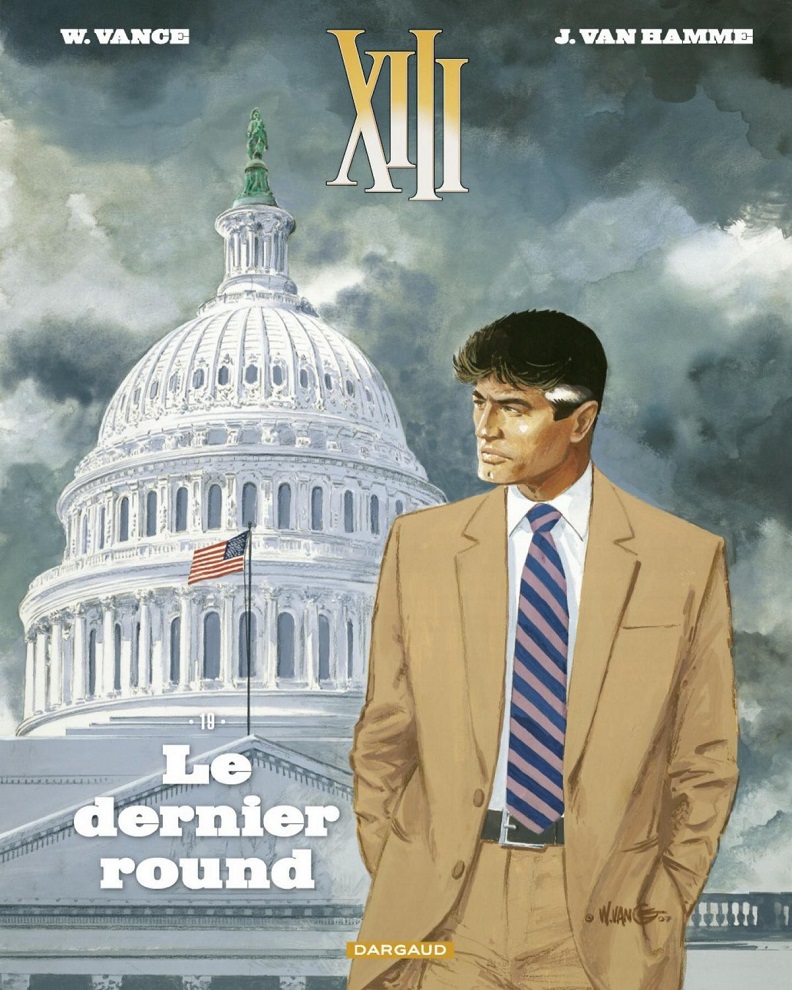
XIII
However, Van Hamme was not convinced. "Prentice’s strips, which were published in the newspapers, were very simple with no backgrounds and mostly black and white and we wanted intricate backgrounds and lots of colours. Thankfully, after producing nine pages, Prentice withdrew saying he couldn't do it. When Philippe Francq rang up, I knew his work which I liked. I could be sure when I said, ‘he starts running to the water’ that he would do something very exciting,” he says. The series has spawned 23 albums, video games, a television series, and two movies (with Hollywood stars Sharon Stone and Kristen Scott Thomas).
Ongoing adventures
Granted the hereditary title of Belgian Knight by King Phillipe in 2015, Van Hamme, now well into his ninth decade, has turned over his long-time series to other writers – but he still exercises editorial oversight. At the same time, he continues to produce stories at a brisk pace.
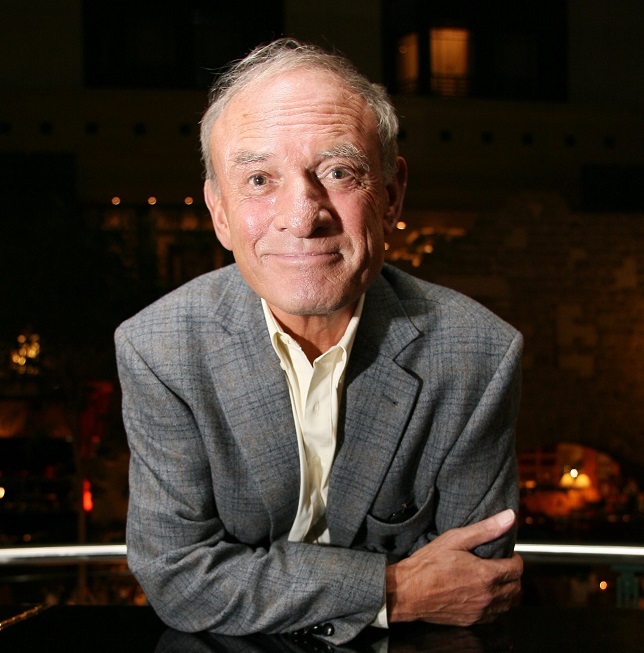
Jean Van Hamme
We are barely three months into 2023 and he has already published two new books. One of them is a Thorgal adventure spinoff (Adieu Aaricia) where Thorgal is nearing the end of his life but must still contend with old enemies.
The other is creating a particularly big buzz: Van Hamme is doing a follow-up album to the first E. P. Jacobs book, Le Rayon U (The U Ray). Published 80 years ago during the Second World War, Le Rayon U is now seen as a prequel to Jacobs’s Blake & Mortimer series: they are not in it, but all the elements are present.
At the time, Le Journal de Tintin was publishing the adventures of Flash Gordon in French but had to stop because, according to Jacobs, the occupation forces outlawed American comics. Jacobs was hired to create an ersatz replacement series and the result was Le Rayon U. There was no resolution to the various plot lines at the end of the album so Van Hamme completing the story is something many aficionados of both comic book icons want to see.
The new album is entitled La Flèche Ardente (The Arrow of Fire), which also fits in with Van Hamme’s previous work of continuing the Blake & Mortimer series after Jacobs died in 1987. His book 1996 book, L'Affaire Francis Blake (The Francis Blake Affair), illustrated by Ted Benoit, was followed by four others, the most recent being Le Dernier Espadon (The Last Swordfish) in 2021.
Van Hamme has a special affection for Blake & Mortimer, remembering having the first adventure, Le Secret de l'Espadon (The Secret of the Swordfish) read to him by his uncle when he was six. So, when he was chosen to continue the series after Jacob's death, it was like a dream come true.
"I took it as an unexpected honour and a pleasure because they were heroes of mine since my early childhood,” he says. “When years and years later you are responsible to continue the work...Well OK you breathe a little bit and you think I could even say, ‘I could do it for nothing’ (which, of course, I didn’t say). I was like an actor who has been offered the rôle of Cyrano or King Lear and I really, really, really enjoyed doing all that writing. It was a pleasure to be Jacobs.”
Three more projects are brewing. This fall will see the third and last album of La Fortune des Winczlav (The Fortune of the Winczlavs), a mini-series that is a Largo Winch origin story. Then there are his projects to make something new out of something old. One is to take seven short stories he has published over the years and make them showcases for seven young up-and-coming illustrators who will each turn one into a graphic novel.
The other involves taking a TV movie he wrote that aired 35 years ago and adapting it into comic book form. It’s the story of two young teenagers with single parents (father is divorced, mother is widowed) who try to use magic to bring the adults together. This being a light comedy, things go amusingly awry.
All this shows that Van Damme is still doing what he does best, writing stories. “I’m not ready to retire but I can’t start a new series at this stage,” he says. “So, I’m doing different new things, which means it's a new world. I feel much younger because I am a beginner and when you're a beginner you feel younger. And this is very exciting.”
